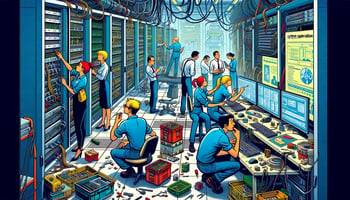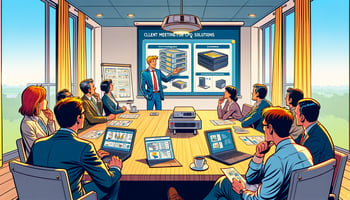Companies continually search for ways to optimize sales processes and boost customer experiences....
Bridging the Gap: Integrating ERP Systems and Advanced Configurators
Picture this: You're on a tightrope, balancing precariously between the world of expansive ERP systems and the dynamic realm of advanced configurators.
This is no circus act; it's the reality for businesses striving to harmonize their internal systems with customer-facing solutions. The integration of ERP systems with cutting-edge configurators isn't just a technical endeavor; it's an art form, where precision, understanding, and innovation come together to create a seamless experience.
The Integration Challenge: Integrating a configurator with an ERP system is like fitting together pieces of a complex puzzle. Each piece - data conversion, rule importation, comprehensive product coverage - must perfectly align to create a complete picture. This process can be fraught with challenges, from ensuring the integrity and accuracy of transferred data to maintaining real-time synchronization between the configurator and the ERP system.
Technical Solutions and Innovations: Addressing these challenges requires a configurator that is not just compatible with ERP systems but is also designed to enhance them. The key lies in developing a configurator that is intuitive, flexible, and robust. A tool that can accurately translate ERP data into user-friendly formats, manage complex rules and constraints, and update in real-time to reflect changes in the ERP system.
Enhancing Product Customization and Sales: The payoff of a well-integrated configurator is immense. Sales teams can offer more accurate, customized products, reducing the time spent on manual data entry and error correction. Customers enjoy a more dynamic and interactive buying experience, with a wider range of customization options available at their fingertips. This level of efficiency and customer engagement can be a significant differentiator in today's competitive market.
The Future of ERP-Configurator Integration: Looking forward, the integration of ERP systems and configurators will continue to evolve, driven by advancements in technology and changing customer expectations. Businesses that stay ahead of this curve will not only streamline their internal processes but also offer a more compelling value proposition to their customers.
The integration of ERP systems with advanced configurators is more than just a technological upgrade; it's a strategic move towards more efficient, customer-centric business processes. By bridging this gap, companies can unlock new levels of customization, efficiency, and customer satisfaction, paving the way for a more agile and responsive business model.
Are you ready to take this leap?





